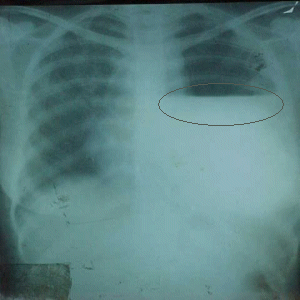Thursday January 11, 2007
Risk Factors for Extubation Failure !
Multinational study (8 countries) of 900 patients published in December 2006 edition of "Chest" looking into risk factors for extubation failure in patients following a successful spontaneous breathing trial . 121 out of 900 patients have been successfully extubated. Following risk factors were identified
- Rapid shallow breathing index (RSBI) more than 57 breaths/min/L
- Positive fluid balance and
- Pneumonia as the reason for initiating mechanical ventilation
Classically, and originally by Drs. Yang and Tobin, a threshold of RSBI at 105 breaths/min/L has been described as a predictor of weaning failure. In this study, the RSBI with a value of more than 57 breaths/min/L increased the risk of reintubation from 11 to 18%.
Another thing to note in this study (as also described in discussion) is that though a positive cumulative fluid balance from hospital admission to weaning was associated with weaning failure, the administration of diuretics was not associated with improved weaning outcomes.
The Pneumonia patients, were more likely to have tracheal aspirates positive for pathogens prior to extubation and authors suggested that patients may not have fully cleared the micobial load from their pneumonia, and therefore continued to require ventilator.
The take home message from this study is that extubation failure is a complex process and only improvement in clinical values and parameters and successful spontaneous breathing trial is not the guarantee of successful extubation. This put intensivists at rough spot as at one end early extubation should be the goal but on the other hand extubation failure is also not the desired event.
Related previous pearl: RSBI Rate - Not only RSBI !
Reference: click to get abstractRisk Factors for Extubation Failure in Patients Following a Successful Spontaneous Breathing Trial Chest. 2006;130:1664-1671.)








